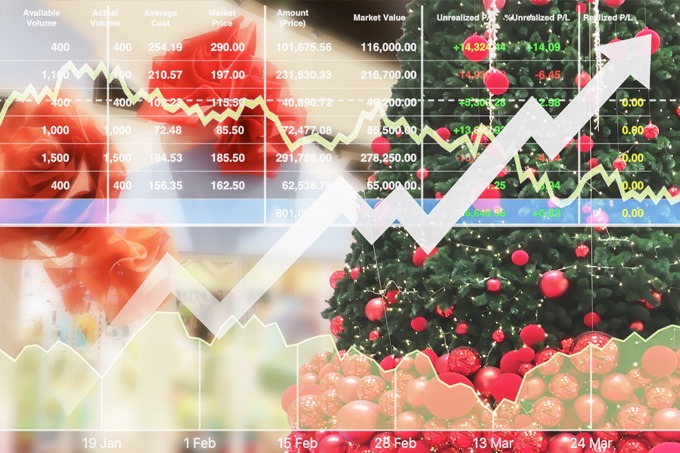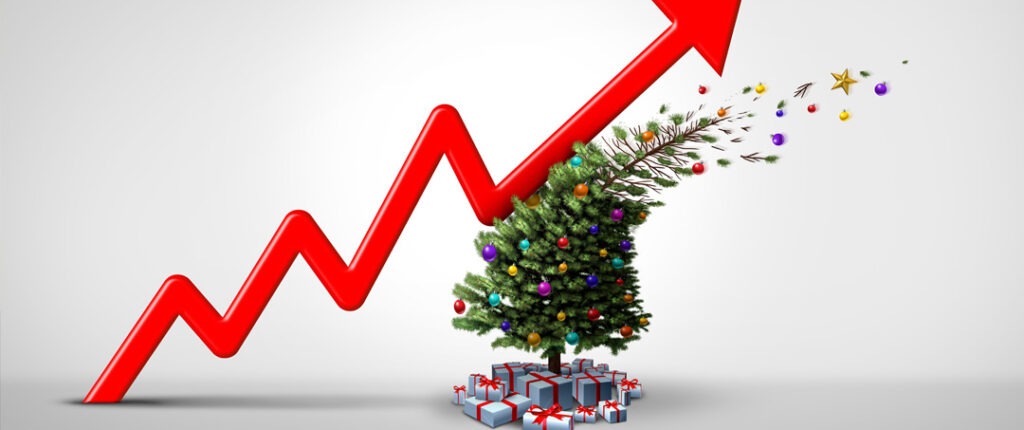Almost half of all U.S. homes stock up on seasonal chocolates for the winter holidays, but only 25% buy chocolate for Halloween. This sweet little fact is a clear reminder of market rhythms and consumer habits, or more precisely, business seasonality. It’s also a compelling example of why you shouldn’t sell Christmas trees in July.

Seasonality, or the increase and decrease in demand depending on the calendar season, can create peak surges that strain inventory levels, disrupt supply chains, and create customer service challenges. And during the off-season, some businesses find that their products won’t sell, leading them to close down their operations.
Many businesses try to mitigate seasonality by adjusting their marketing plans and annual advertising budgets accordingly. However, this often fails. Let’s explore the reasons behind this, and how understanding business seasonality and adapting to seasonal trends is the key to success.
Getting the timing just right
Selling Christmas trees in July is probably a bad idea, but what if you could? More precisely, what if you could predict trends and demand to help you respond to challenges your business may face.
To do this, businesses need to leverage various types of data and tools. Here’s a breakdown of the key data types and how they can be used effectively:
- Historical Sales Data: This is crucial for understanding past seasonal trends. By analyzing sales data from previous years, businesses can identify patterns and predict demand for different seasons. For instance, a retailer might notice increased sales of certain products during the holiday season, which can guide inventory and marketing strategies for the upcoming year.
- Market Research: Understanding consumer preferences and market shifts is essential. Surveys, focus groups, and market analysis reports provide insights into changing consumer behaviors and preferences, which can affect seasonal demand.
- Economic Indicators: Broader economic trends can influence consumer spending. Data on employment rates, consumer confidence, and disposable income can help predict how these factors might impact seasonal buying behaviors.
- Competitor Analysis: Monitoring competitors’ activities, such as pricing strategies, promotions, and product launches, can provide valuable insights into market trends and help businesses anticipate seasonal demand.
- Social Media and Web Analytics: Social media trends and website traffic data can indicate consumer interests and preferences in real-time. For instance, a sudden spike in social media conversations about a specific product can signal an upcoming trend.
Be sure to calculate your seasonal shifts in demand at the end of every fiscal year. This will provide you with an accurate record of your order demand and help you plan inventory, staffing, and marketing strategies accordingly.
Your marketing campaigns should be based on the preferences and trends identified in your data analysis, and can include dynamic pricing strategies. For example, airlines often change prices based on seasonal travel trends. You can also innovate or adapt products and build brand awareness based on seasonal trends and consumer feedback.
Finally, automation software can streamline complex tasks like inventory tracking, truck routing, and sales management. This automation is key for thriving during peak seasons as it reduces the workload on managers, freeing them to focus on key parts of the operation that can’t be automated.
Right place, right time

Think of business seasonality like Santa Claus – always there, even if you don’t see it. And just as Santa relies on his trusty reindeer, companies can use predictive analytics to slay their timing game. As the calendar flips to January, typically a downturn month, your year-end analytic insights can become your guiding star to peak performance. These insights empower businesses to adapt and thrive, so you can start selling Christmas trees in December instead of July.






